There can be your advertisement
300x150
Villa by Lake Tai - Poetic Dialogue Between Southern Chinese and Modern Aesthetics

Project: Villa by Lake Tai
Architects: Z+H Interior Design
Location: Jiangsu Province, China
Area: 11,840 sq ft
Photography: Cai Yunpu
Villa by Lake Tai from Z+H Interior Design
"Creating a garden is like writing poetry; one must introduce curves and turns with the proper method."
Qian Yun, Lu Yuan Chuan Hua, around the Qing Dynasty
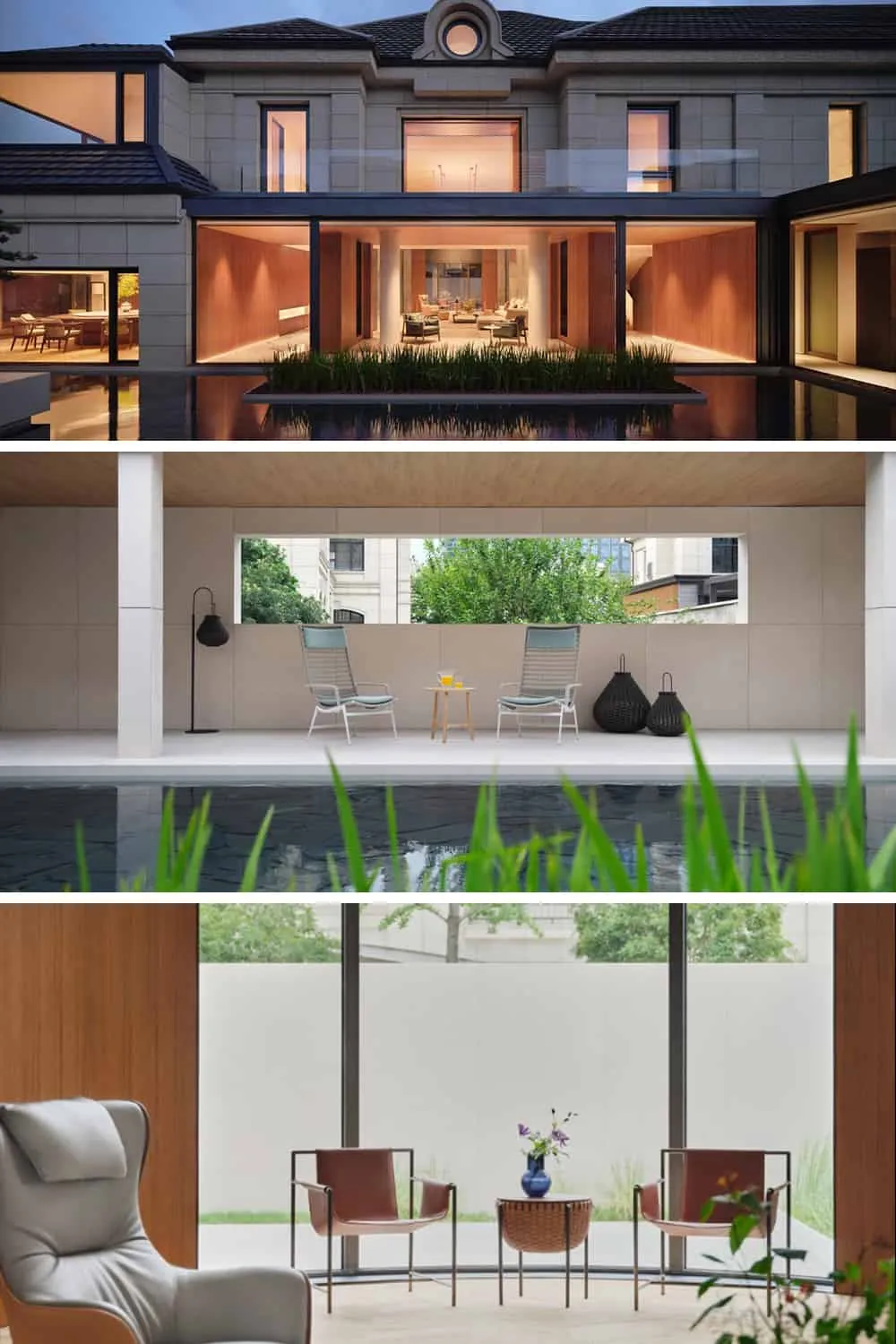
White pavilions, gentle breeze, green grass and trees, covered bridges arched over clean water, picturesque landscapes integrated with interior spaces: in classical Eastern aesthetic concepts, the courtyard provides peace and rest, a place of joy and seclusion from the outside world. Although traditional Eastern aesthetics are somewhat distant from modern urban experience in style and form, their spirit remains relevant and offers an interesting conceptual foundation for contemporary designers.
Located near the famous Lake Tai in Jiangsu Province, the project occupies a plot over 1000 square meters, of which 600 sq m constitute the central courtyard. Surrounded by a modern covered pedestrian walkway and bordered by several pools, the courtyard visually and spatially connects with the interior spaces of the house. Boundaries between interior and exterior disappear, the garden and rooms reflect each other, people walk through the garden as if they are part of a scenic canvas.
Zhang Haihua used minimalist principles to structure the courtyard of the project, removing all unnecessary elements to create a space notable for its simplicity, elegance, and clarity. The pool water encircles the courtyard like jewelry, uniting nature and architecture in a close, well-balanced connection. People walking through the courtyard and adjacent areas encounter a constant series of unexpected views due to the skillful modulation of internal arrangement. Although the architectural language is Western modernism, the courtyard design subtly incorporates a sense of refined Eastern aesthetics and multifaceted garden experience.
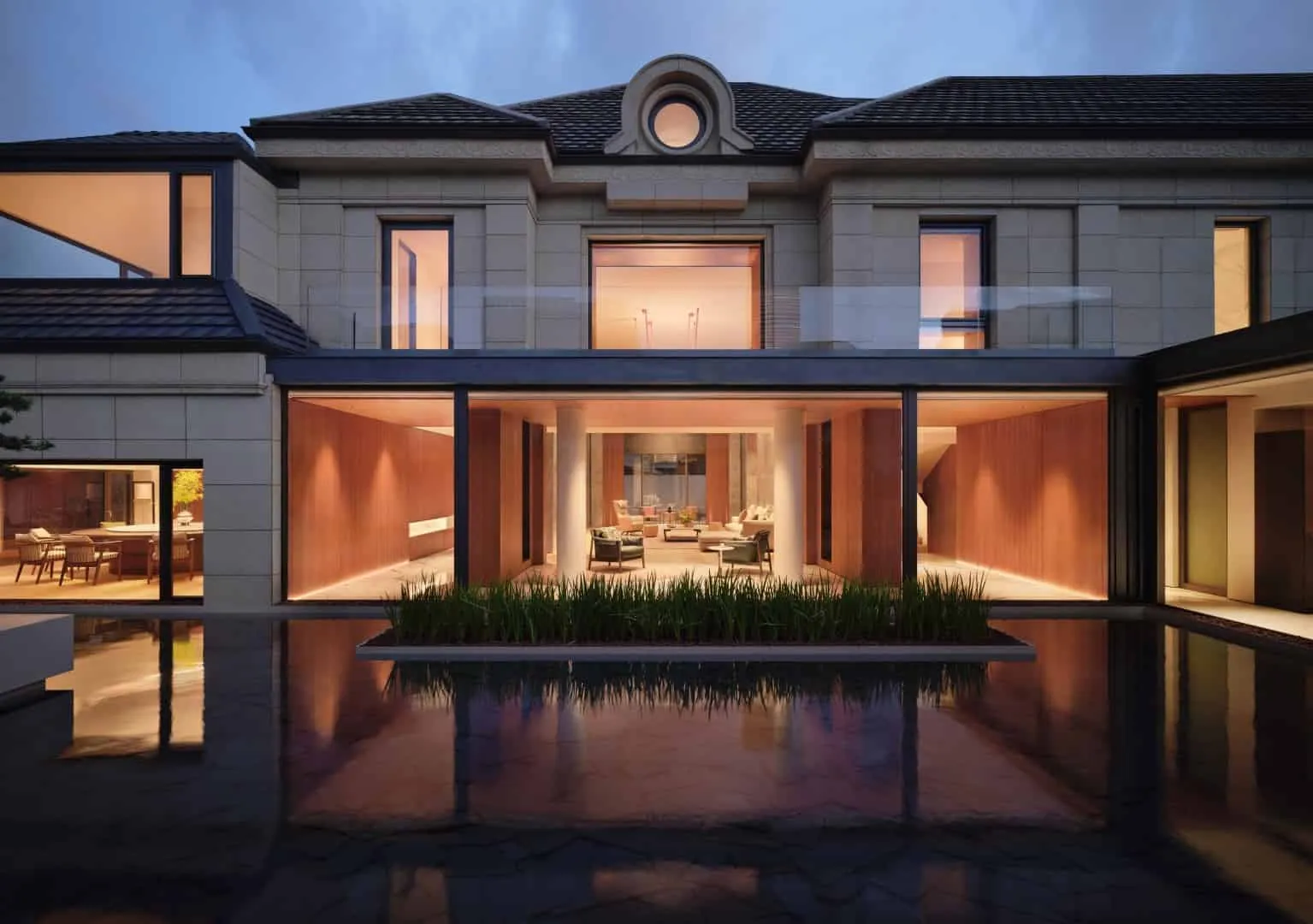
Means to Be "Enchanted"
In "Atmosphere of Architecture," Peter Zumthor spoke about the feeling that architectural spaces can evoke in people experiencing them - that they possess the potential to "create a sense of freedom of movement, open-mindedness in an environment full of curious wandering..." He compared this to the subtle and focused attention to details that achieves a kind of invisible enchantment, which positively influences people upon entering the space. At the steps leading to this courtyard project, this sense of enchantment becomes evident with the appearance of grass - barely held in place, it awakens a subtext of wildness within this relaxed and elegant atmosphere.
The descending stairwell invites exploration of where it leads. Near the thick grass, they unexpectedly delve deeper, ending at the basement level of the house. There appears an entrance to a spiral marble staircase. If one follows the steps, they return back to the main hall of the first floor.
Opposite the spiral staircase in the basement is an extended kitchen island, which besides a space for socializing or drinking also serves as spatial buffer upon entering the house from an adjacent garage. A specially designed gutter light fixture embedded in the ceiling creates a unique visual effect overhead, highlighting the role of light in this space. It also gives direction to this long room, pointing toward other parts of the house and adding a modern element to an atmosphere that is warm and relaxing.
Following the designer's hidden invitation on the first floor, the lowered ceiling in the white vestibule of the spiral staircase subtly forms a view into the living room. When one steps into the living room, space opens before the eyes as if quiet and melodious music begins to play.

Flowing Space
In the mid-20th century, renowned architect Mies van der Rohe used steel structures and glass facades to create a new kind of flowing space, creating simple designs that convey restraint, rationality and order.
When Western concept of classical modernist architecture meets the requirement of Eastern garden "imagination and reality blend to create new landscapes with each step," it's important that each interprets "flow" in its own way. To unite these different but complementary ideas, Zhang Haihua used minimalist architectural aesthetics, introducing changes in the opening and closing of various spaces. With careful control over transparency levels, each space is individually defined but also interconnected and flows into others.
These interrelated spaces offer an interesting range of variations in proportions, atmosphere and materials, providing a remarkable and pleasant experience for anyone moving through different rooms. The skillful blend of Eastern and Western sensitivities, as well as the synthesis of ancient and modern here creates a new type of combination of form and meaning.
People walking through the building and courtyard will find no forced movement routes, because when one reaches the "end," a new surprising and unexpected path opens up. Minimalist floor-to-ceiling windows add a sense of transparency between interior and exterior areas, allowing interior spaces to extend beyond the building walls into the surrounding nature.
According to the structural minimalism and conceptual clarity of the project, designer Zhang Haihua also optimized the overall material selection for interiors. This led to visual coherence, enhancing the sense of architectural flow in various rooms and spaces. Organic materials are used throughout, natural tones and wood textures give large open spaces a rich atmosphere of warmth and elegance.
A high, curved wall covered in wood veneer surrounds the relaxation area at one end of the living room, with large floor-to-ceiling windows that expand the interior space to an adjacent outdoor entrance area. Correspondingly, on the opposite side of the living room a pair of round columns, low ceiling and floor-to-ceiling windows work together to frame the view pointing toward the external pool and water plants in the courtyard, creating an elegant tea area where interior and exterior spaces integrate seamlessly. The overall L-shaped space formed by the living room and kitchen together stands out for its open atmosphere created by their views outdoors.
Looking along the length of the living room toward the courtyard, the covered veranda acts as an invisible axis in space, creating a calming and peaceful symmetrical beauty. At mid-distance is an exquisite landscape of white walls, greenery and sunlight penetrating the entire living room space, finally reaching a quiet pool of water at the window on the opposite side. Together they echo in layers of lush grass, quiet breeze and the refreshing sound of water, bringing closer the tranquil beauty of nature.

Measure of All Things
Nature has no rules, but it follows certain fundamental laws that give a sense of correctness and beauty to those who experience them. This feeling can also represent a turning point achievable through architecture that meets people's needs for physical and mental wellbeing.
From the first entry into the space, architectural elements and proportions designed to evoke curiosity constantly arise, creating an atmosphere that invites people to explore and discover. In the main living space of the house, a specially designed corridor with low ceiling wraps around and emphasizes the centrality of the living room, giving spaces an interesting rhythm of height changes and allowing people to walk through it with a feeling of freedom and openness.
Where the living room window meets the courtyard pool, the first-floor height reflects the water level, and surrounding panels of wood veneer create a calm and comforting sense of spatial enclosure.
As one moves toward the dining room, a person passes through a long narrow corridor that first gives an impression of its narrowness but then expands and opens significantly after several steps with an unexpected influx of natural light.
The designer also created areas contrasting the open concept of the entire space. The height of windows was carefully planned to ensure appropriate privacy, but also considering the framed views from each. For example, a long horizontal window simply and elegantly frames a picture scroll of similar dimensions. Family or friends can gather around the dining table for meals and conversation, enjoying views of the picturesque courtyard, a scene of natural warmth and delight.
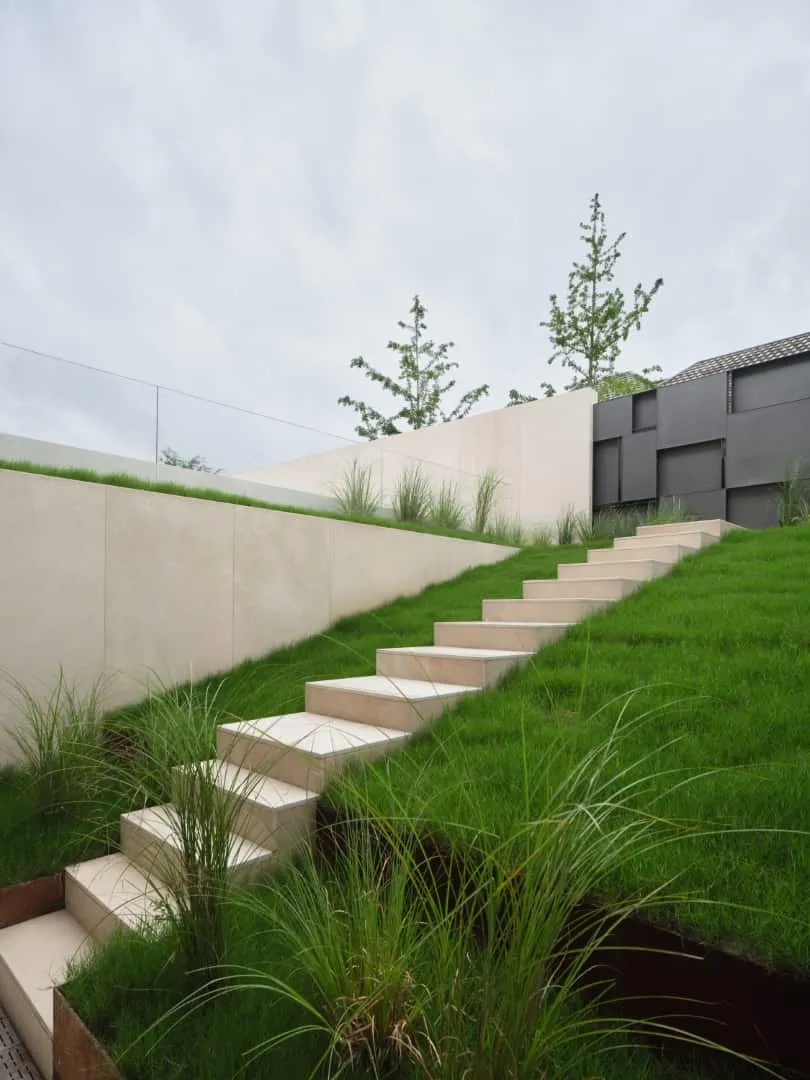
Elegant Garden
An elegant appreciation of the Jiangnan region's aesthetics has always been inseparable from its natural environment. Already in the Six Dynasties period, poets wrote about elegant street gatherings and secluded life among mountains, rivers and wild vegetation, which became a popular topic for subsequent generations.
Whether it's "tall mountains, dense forests and bamboo" or "narrow paths, tall grass and trees, morning dew on clothes," elegant leisure can always be adapted to harmonize with nature. The thriving growth of all natural elements can add vitality to humanistic efforts, and human culture can return back to the natural environment, allowing refinement and elegance to grow over time and space.
Water serves as a ubiquitous and essential element of the project, complemented by a modern veranda. Running along various pools, the veranda provides an outdoor space perfectly suited for light relaxation since it encircles the entire building and connects all areas of the house, visually and spatially.
A diverse collection of water elements, pools, planted areas and platforms of varying heights adds tremendous sensory richness and multiple pathways for enjoyment.
The artist of the Ming Dynasty, Tang Yin once described the clarity and tranquility of Lake Tai as "vast, boundless space, a huge illuminated surface of clean green water." Through deep study and interpretation of the cultural heritage of ancient waterside cities in the Jiangnan region, Zhang Haihua's work adapts and reinterprets the spirit and aesthetics of poetic life in local literati, resulting in a timeless architectural work unbound by style or trends.
Form may be simplified to a simple appearance, but the core characteristics of Eastern spirituality remain etched in the heart, lending implicit beauty to artistic intention still today. Unbound by style, spiritual charm lives in the hearts and minds of those who tend to recreate.
"Behind the door lies a mirror lake, spring breeze unchanged from ancient waves." Time passes and the world changes rapidly, but all natural things remain alive, preserving the power to offer people hope, openness and a calm spirit. Living in harmony with nature has been an inspiration for Chinese writers for thousands of years and is clearly evident in the modern pursuit of unity between nature and humanity in China. Today, various approaches are applied to convey this spirit, including a conscientious pursuit of design and architecture - like free brushstrokes elegantly connecting modern forms with ancient refinement.
- Project description and images provided by Current-Newswire
More articles:
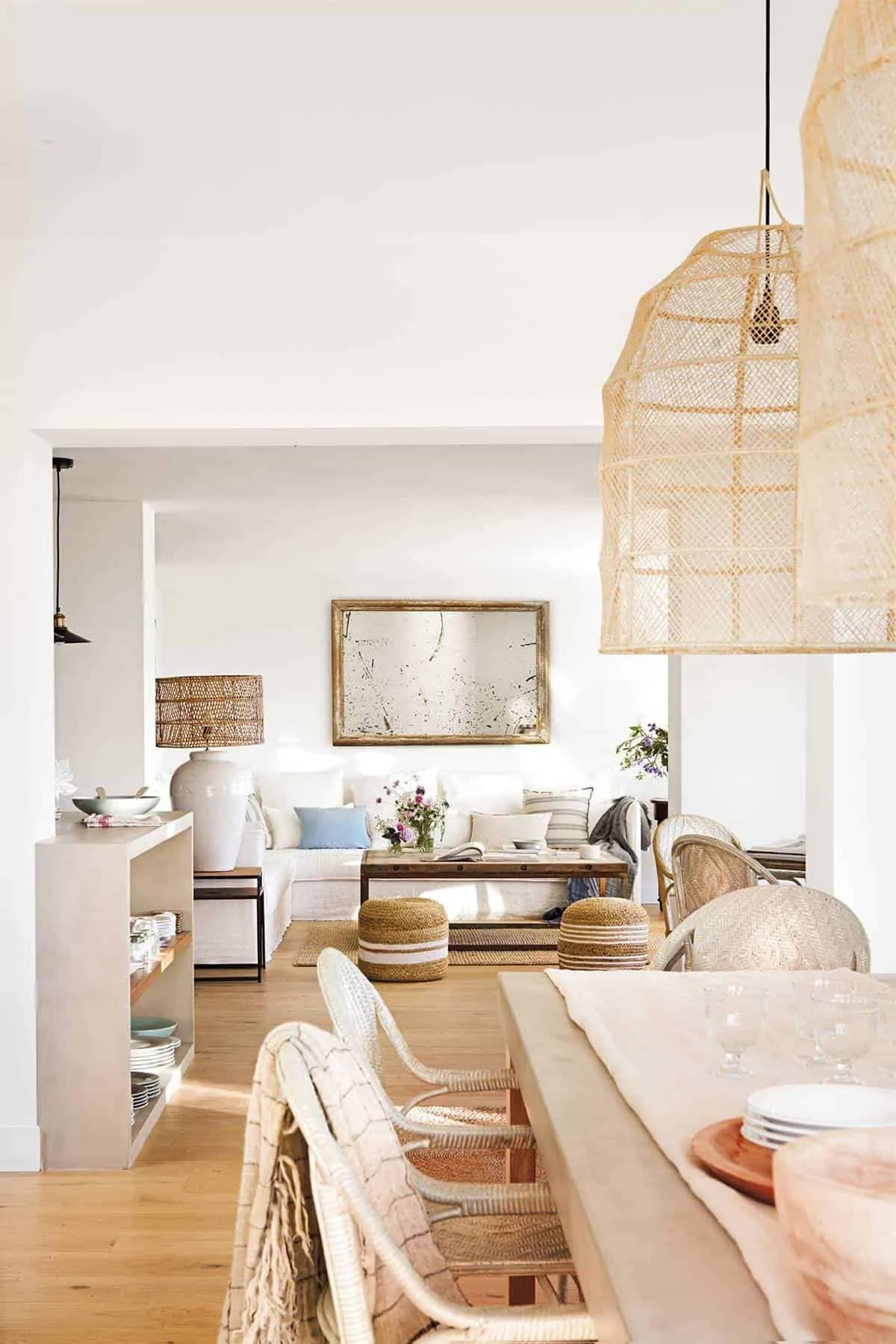 Key Elements of the Perfect Mediterranean Design
Key Elements of the Perfect Mediterranean Design Keys for Heating Your Home Without Gas and Electricity
Keys for Heating Your Home Without Gas and Electricity Key Elements for Creating Natural Design at Home
Key Elements for Creating Natural Design at Home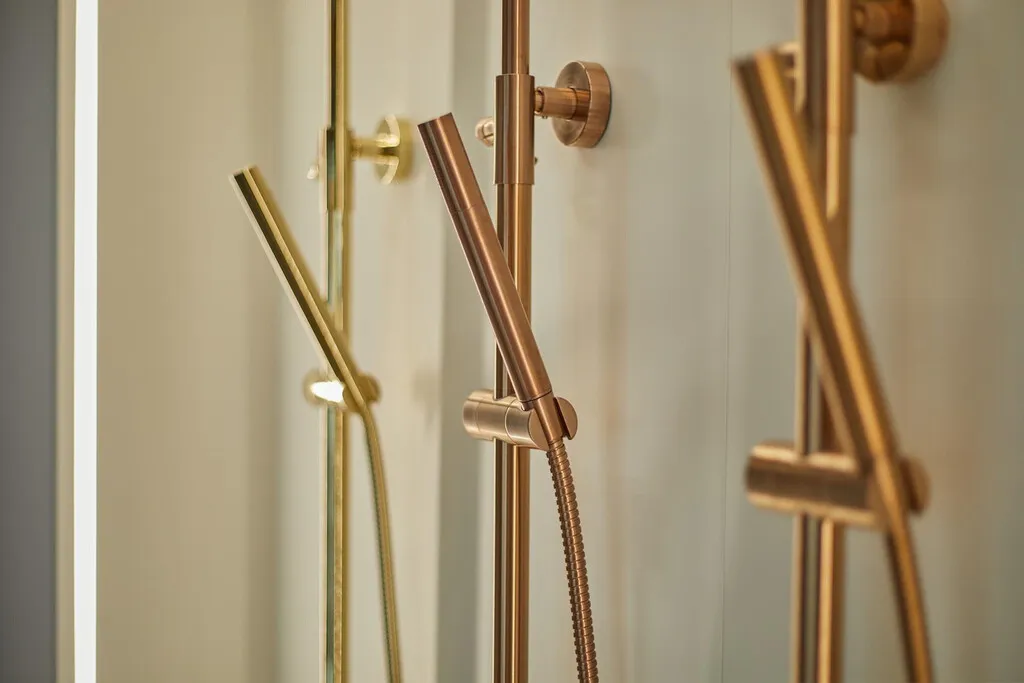 Keys to a More Eco-Friendly and Stylish Bathroom
Keys to a More Eco-Friendly and Stylish Bathroom Kips Bay Decorator Show House Dallas 2024: An Artful Display of Design
Kips Bay Decorator Show House Dallas 2024: An Artful Display of Design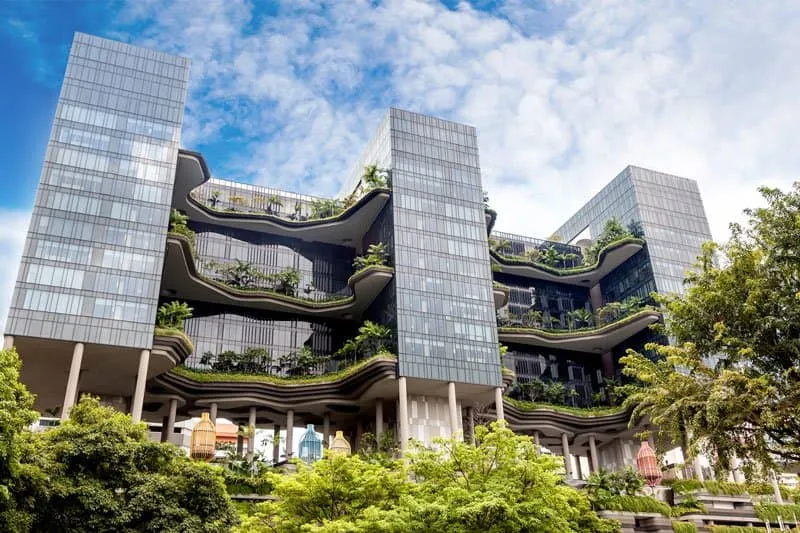 Kira Virzhé: The Relevance of Ecological Design Will Continue to Grow
Kira Virzhé: The Relevance of Ecological Design Will Continue to Grow Kitchen and Bathroom Renovation
Kitchen and Bathroom Renovation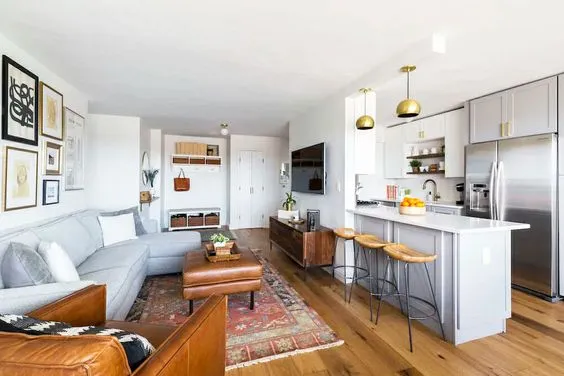 Kitchen with Living Room: Design Ideas
Kitchen with Living Room: Design Ideas